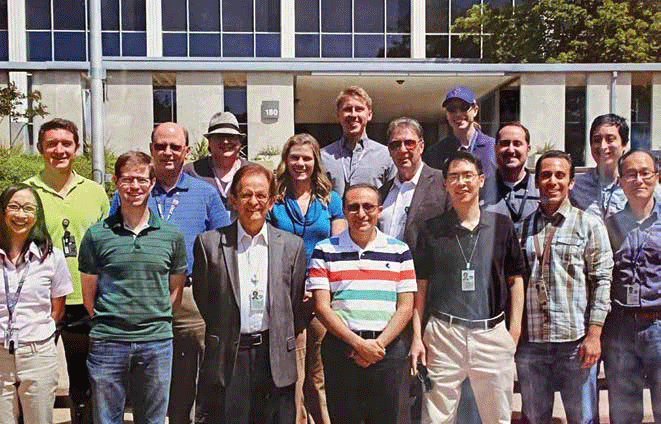
From the early years of NASA flight missions through the development of the space station, Dr. Hamid Habib-Agahi has been a witness to history in his almost four decades of working at JPL, which is managed by Caltech for NASA. When asked what he appreciates the most from his career in risk and cost analysis, it is not a specific project that comes to mind. He remembers the people.
“When you come in as a newcomer, they’ll work with you. Without telling you, they’re educating you,” says Habib-Agahi. “At JPL, everything is open. They pick up your hand and they raise you up. People are the greatest assets that JPL has.”
It is the importance of investing in people that helped guide his decision, in partnership with his wife, Manijeh, to make several life income gifts to Caltech. Life income gifts, including charitable gift annuities and charitable remainder trusts, provide donors with both the satisfaction of supporting a cause they care about and a steady lifetime income for themselves or a loved one.
Habib-Agahi’s analysis determined that supporting Caltech graduate students is a strategic investment in the future of science. As a result, he has chosen to create the Hamid and Manijeh Habib-Agahi Economics Fellowship Fund through his giving. He hopes the fund will allow Caltech graduate students to focus on their research without having to pursue outside employment for additional income.
Habib-Agahi credits the start of his own JPL career to James “Jim” Quirk who served as a mentor when he was pursuing a PhD in mathematical economics at Purdue University.
Quirk would leave Purdue to become a professor at Caltech, helping establish the Institute’s PhD program in economics. He encouraged Habib-Agahi to join him there.
Fortuitously, Habib-Agahi already had experience with Caltech, having worked with Olga Taussky-Todd, the first woman to receive a full professorship at Caltech and a pioneer in computer science. “I really liked the atmosphere,” he says of his time at the Institute in the mid-1960s. While Habib-Agahi was waiting for a possible faculty opening, Quirk suggested that JPL would be a good fit, given his background in engineering, management, and economics.
That advice led to a career in risk analysis, probabilistic cost model development, systems analysis, and resource optimization within JPL. Habib-Agahi actively sought out projects with the Department of Energy and the Department of Defense on environmental issues to expand his team’s portfolio, work that would eventually include the early development of the space station. In the mid-1980s, NASA tasked Habib-Agahi’s team with developing quantitative models to support design-to-life-cycle cost. They created an integrated set of engineering and cost models, resulting in new tools housed in JPL’s Project Design Center.
Nearing retirement nearly a decade ago, Habib-Agahi gave one of his last presentations at the NASA Glenn Research Center. To his surprise, he was presented with the William S. Rutledge Lifetime Achievement Award. Beyond the contributions of his professional work, Habib-Agahi’s legacy also will include his support of future graduate students at Caltech.
“If I’m going to contribute anything, this is the best place to make a contribution,” he says. “This gift is in honor of the exceptional experience I have had with Caltech faculty and JPL colleagues. This is a smart investment in the future.”


